By Randy Mink.
An Eastern Europe Danube River cruise with Scenic peeks into Hungary, Croatia, Serbia, Bulgaria and Romania.
On a shore excursion in northern Bulgaria, I constantly had my nose pressed to the bus window, not wanting to miss a thing as we rolled through the fertile fields of the Danubian Plain and rural towns bursting with scenes reminiscent of an earlier time. Here I spotted a shepherd tending his flock, there a farmer in his horse wagon, and women dressed in traditional headscarves and aprons — vignettes right out of the 19th century.
It was springtime, and yellow canola flowers carpeted broad swaths of countryside. Our buses were headed to the Black Sea port of Varna, a big city that turned out to be less interesting than the ride getting there.
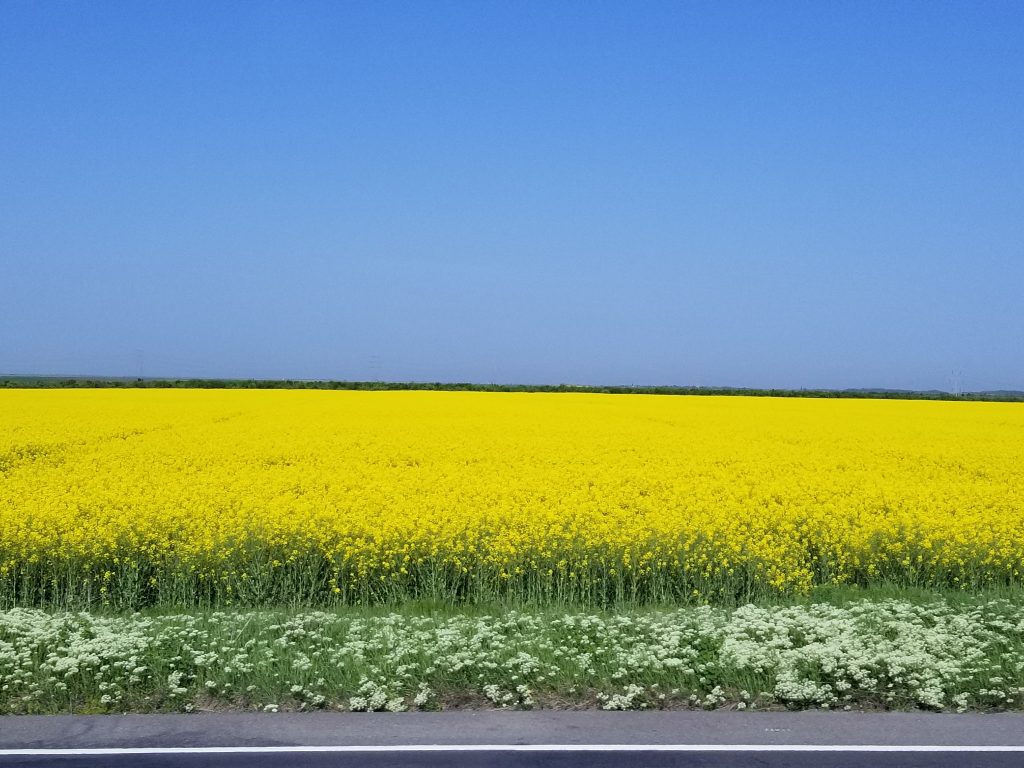
The canola fields of Bulgaria. * Photo: Randy Mink
A Slice of Eastern Europe, from Budapest to Bucharest
The day trip was just one of many eye-opening excursions for passengers booked on Scenic Crystal’s 10-night “Black Sea Explorer” from Budapest to Bucharest — comprising a 7-night cruise and two hotel nights before in Budapest and one after in Bucharest. This river cruise was a perfect introduction to the less-visited countries of Eastern Europe, a slice of the world once closed off to mass tourism from the West. Now, nearly three decades after the lifting of the Iron Curtain, these formerly Communist-controlled societies are forging ahead, in varying degrees of success, with free-market economies. All are ripe for discovery for curiosity-seekers like me, a baby boomer who never thought he’d see the day when the Berlin Wall would fall and the enslaved satellites of Soviet Russia would be free.
Because of my fascination with 20th-century European history, I appreciated that our local guides shared their families’ experiences during those dark Communist days. In Serbia and Croatia they also commented on the 1990s wars ignited by the unhappy breakup of Yugoslavia.
Europe’s Far East: Communist-era Apartment Blocks & National Currencies
Most people don’t think of vacationing in countries like Serbia and Bulgaria — places that seem so alien and out of the mainstream. Scenery-wise, they hardly qualify as dream destinations, and there are few grand attractions. The cities, with their Communist-era apartment blocks, appear drab. The languages, much different from Romance and Germanic tongues, will throw you for a loop. If you’re accustomed to using euros or pounds in Europe, you have to adapt to currencies like the Hungarian forint, Serbian dinar and Bulgarian lev. All of this, however, just lends a sense of exoticism, and then there’s satisfaction in exploring a region not overrun with English-speaking tourists. You might call it Europe’s “Far East.”
The best way to sample these countries is an Eastern Europe Danube River cruise where everything is wrapped into one neat package. My home for this Danube adventure was one of the sleek Space-Ships in the growing fleet of luxury operator Scenic, a company based in Australia.
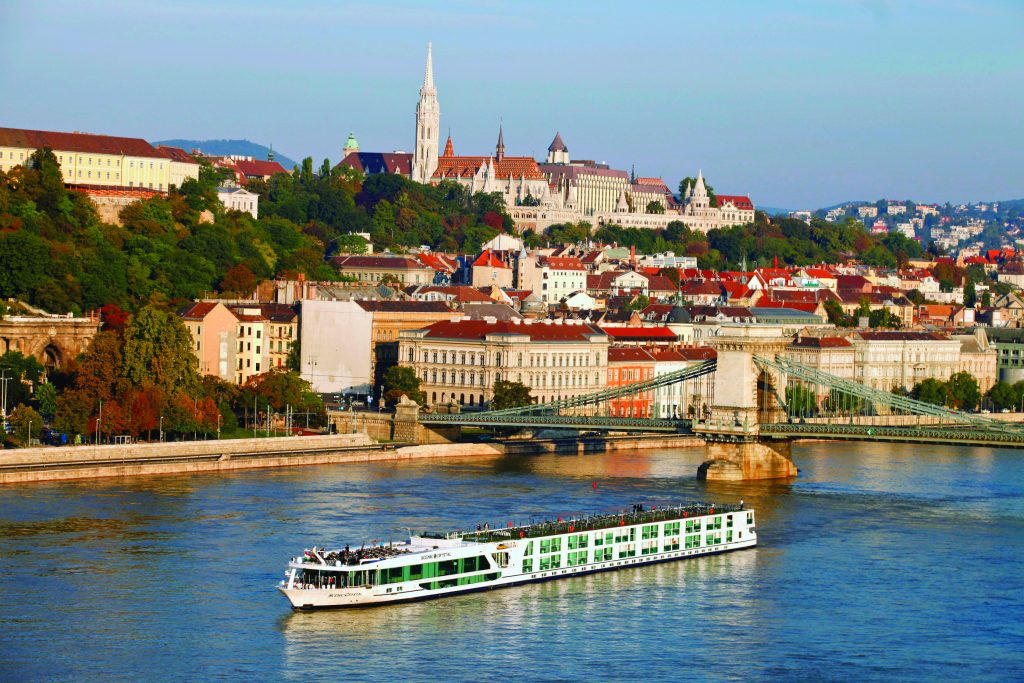
Scenic Crystal on the Danube in Budapest. * Photo: Randy Mink
All Aboard in Budapest, Hungary
From Budapest, where a two-night hotel stay is included in the fare (with most passengers at the Marriott), the 169-passenger Scenic Crystal took us to Kalocsa, Hungary; Osijek, Croatia; Belgrade, the capital of Serbia (and former Yugoslavia); and Ruse and Silistra, Bulgaria. (Though an excursion from Silistra goes to Varna, the Scenic Crystal does not sail as far east as the Black Sea, despite the name of the itinerary.) The Scenic package ends with a hotel night in Bucharest, the capital of Romania.
The Danube flows for about 1,800 miles from Germany’s Black Forest to the vast delta where Romania and Ukraine border the Black Sea, touching more countries (10) than any other river. Scenic’s most popular Danube itineraries operate between Nuremburg and Budapest, with stops in Germany and Austria.
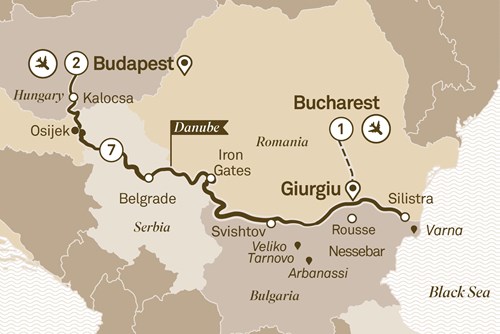
Scenic’s 10-night “Black Sea Explorer” doesn’t actually cruise all the way to the Black Sea. * Photo: Scenic
Budapest, Hungary
Of all the cities visited on our Eastern Europe Danube River cruise, Budapest was the most impressive. The two days I had to explore Hungary’s capital prior to boarding the Scenic Crystal, gave me a good overview. I took a Scenic-arranged bus tour and poked around on my own.

A Budapest panorama. * Photo: Randy Mink
The morning bus circuit took us to Castle Hill, site of skyline landmarks like the Royal Palace and Matthias Church, and to Heroes’ Square, a sweeping plaza with statues and monuments glorifying Hungary through the ages. As we rode through heavy traffic, our guide gave us a quick lesson in Hungarian culture and history, mentioning the centuries of Turkish rule, the Hapsburgs’ Austro-Hungarian Empire, how Jewish citizens suffered in the ghetto, and how thousands of people were killed and injured during the 1956 uprising quashed by Soviet tanks.
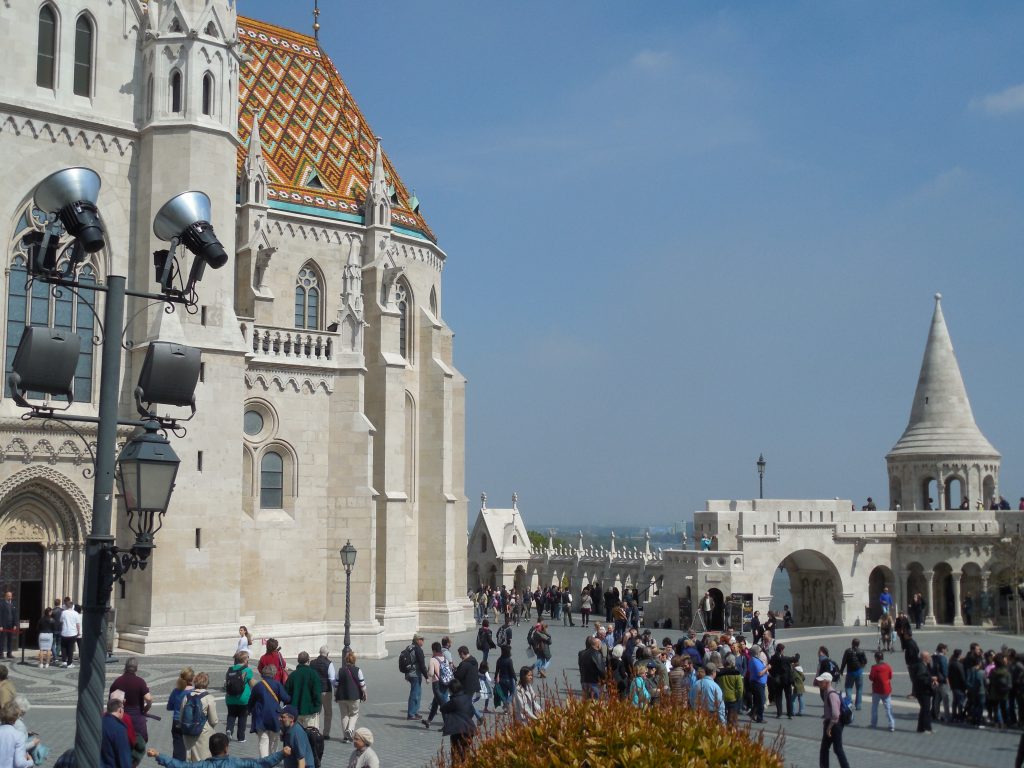
Budapest’s St. Matthias Church. * Photo: Randy Mink
I didn’t have time to visit Budapest’s ornately decorated Great Synagogue, the largest synagogue in Europe and second-largest synagogue in the world (after Temple Emanu-El in New York), but did peek through the gates of the memorial garden behind it. I devoted two hours to the House of Terror, a chilling and deeply moving museum in the very building where the Communist regime’s secret police interrogated and tortured ordinary citizens. Most fascinating were the propaganda films showing “happy” factory workers and eyewitness interviews (English subtitles) of those whose relatives were imprisoned or brutalized. The tiny gift shop sells Lenin and Stalin busts in the form of candles, a sly gesture to the fleeting nature of evil.

Budapest’s Great Market. * Photo: Randy Mink
During my brief visit to Budapest, I also checked out the food and craft stalls in the historic town center, where I had a chance to sample a few pastries amid the Old World trappings of Gerbaud Cafe, a traditional Hungarian restaurant and coffee house dating back to 1858. More local color surfaced at the cavernous Market Hall, a bustling farmers’ market, souvenir spot and transit station where I savored goulash soup dished up by one of the second floor’s many food vendors.
After our first-night dinner aboard the Scenic Crystal, which was moored in Budapest until morning, we enjoyed an hour-long cruise past the illuminated domes and spires of churches, the Royal Palace and grandiose Hungarian Parliament, the neo-Gothic masterpiece often shown on river cruise brochures and TV commercials.
Kalocsa, Hungary
A day after departing Budapest, our ship arrived in Kalocsa, Hungary, about 100 miles south of Budapest. This is the country’s “paprika capital,” so we had plenty of chances to buy souvenir bags of sweet and hot paprika at stops like the House of Paprika, a small museum maintained by the local growers’ cooperative. The main event in Kalocsa was the horse show at Bakod Puszta farm, where riders in traditional costumes performed stunts.

Horse Show in Kalocsa, Hungary. * Photo: Randy Mink
Osijek, Croatia
The Danube cuts through the northeastern corner of Croatia, an agricultural area far from the country’s better-known Adriatic resorts. There we toured Osijek, the main urban center in the region of Slavonia (not to be confused with the countries of Slovenia or Slovakia). Located on the Drava River, a tributary of the Danube, Osijek is just 18 miles from the Hungarian border and 12 miles west of Serbia.
Since the Drava was low, we had to take a bus from the Danube port of Vukovar, but Maja, our 36-year-old Croatian guide, kept us enthralled with insights into her country’s past and present. Right off the bat she started talking about the 1991 war with Serbia after the collapse of the Yugoslav federation, an arrangement that had suppressed ethnic differences between the component republics during the reign of Communist leader Marshal Tito and his successors. Bullet holes still mar buildings in Osijek and Vukovar.
In Osijek, which bears traces of Hapsburg-era elegance, we enjoyed a guided walk on the cobbled streets of Tvrda, the old walled city, and an organ concert in a 1732 Franciscan church. But the day’s highlight was lunch in the village of Bilje — a home-cooked spread in the intimate setting of a bed and breakfast. It’s one of Scenic’s signature Enrich programs designed to immerse passengers in the local culture.
Lunch in a Local Home
My group of eight feasted at the home of Nada Cavic, a young mom who rents two bedrooms to tourists. Dressed in blue jeans and making easy conversation with her guests, Nada, in fluent English, talked freely about life since the war, mentioning that both her sisters were married to Serbians. She started us out with a soup made with vegetables from her garden and homemade noodles. Also on the menu: meatloaf fritters, sliced potatoes with paprika and meat drippings, cabbage salad and a creamy dish called milk rice. We washed it all down with white wine, elderberry juice, homemade cherry brandy and slivovitz, a plum brandy Nada’s father-in-law made for her wedding last year.

A meal in a local Croatian home. * Photo: Randy Mink
Stayed tuned for Part 2 of Randy Mink’s Eastern Europe Danube River Cruise — to be posted later this week! Here’s PART 2!
Scenic’s 2018 “Black Sea Explorer” cruises are scheduled for April 14 and 22, May 26 and June 3. The first and third sailings are Budapest-Bucharest; the second and fourth operate in reverse. Fares start at $4,895 USD per person, based on double occupancy, plus airfare. Included are all meals, drinks, shore excursions and tips. For more info, go to www.scenicusa.com.
© This article is protected by copyright, no part may be reproduced by any process without written permission from the author. All Rights Reserved. QuirkyCruise.com.

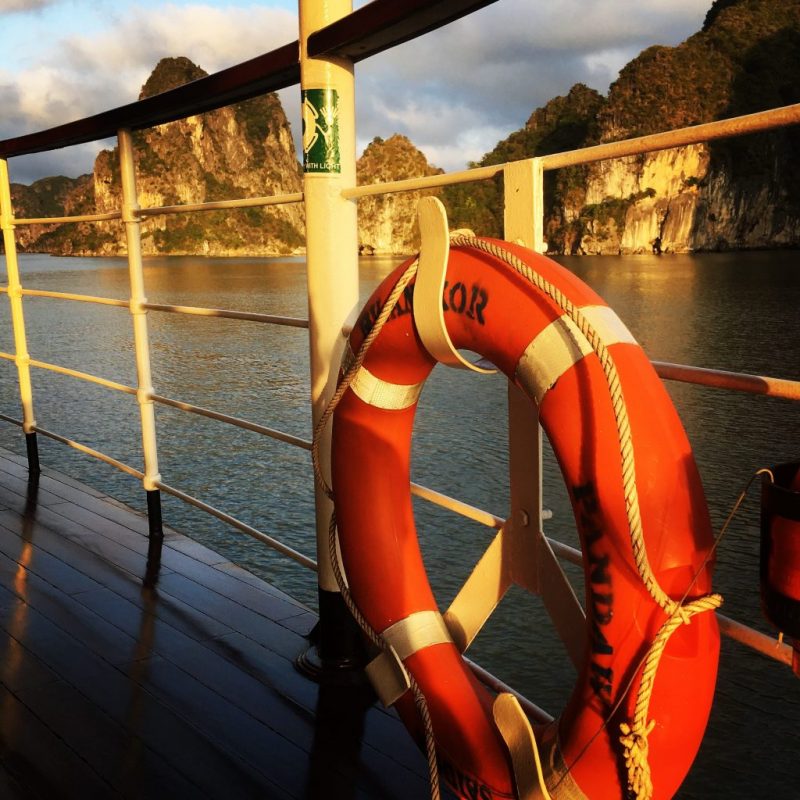
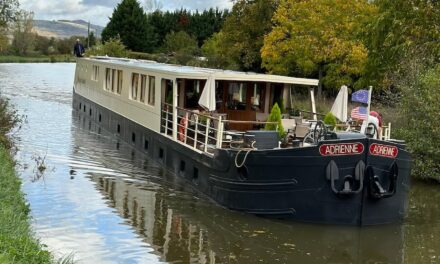
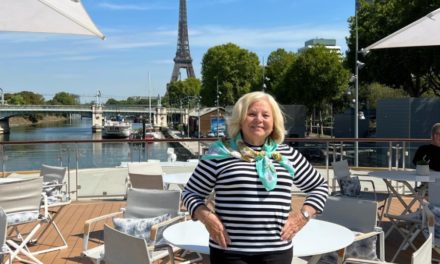
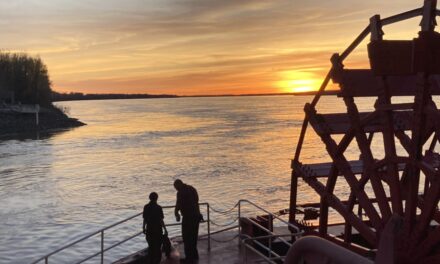








 HEIDI SARNA
HEIDI SARNA











